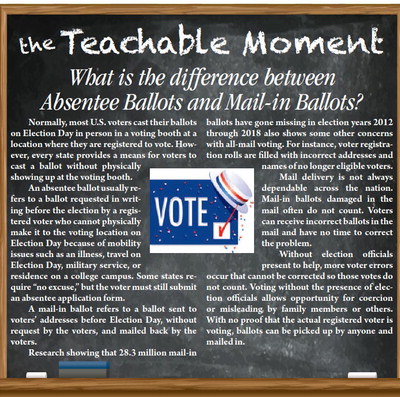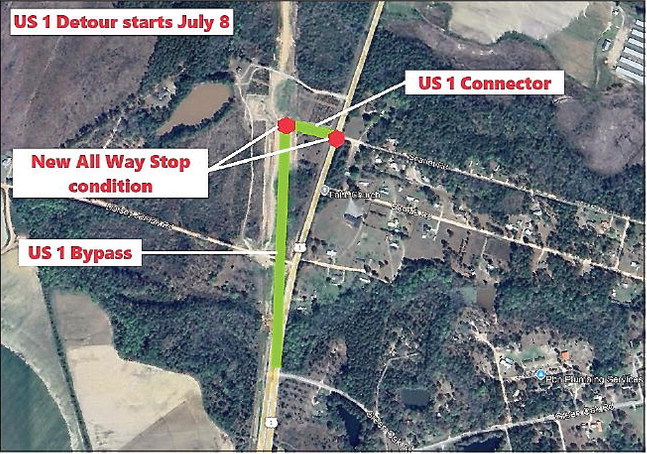Teachable Moment


the Teachable Moment
What is the difference between Absentee Ballots and Mail-in Ballots?
Normally, most U.S. voters cast their ballots on Election Day in person in a voting booth at a location where they are registered to vote. However, every state provides a means for voters to cast a ballot without physically showing up at the voting booth.
An absentee ballot usually refers to a ballot requested in writing before the election by a registered voter who cannot physically make it to the voting location on Election Day because of mobility issues such as an illness, travel on Election Day, military service, or residence on a college campus. Some states require “no excuse,” but the voter must still submit an absentee application form.
A mail-in ballot refers to a ballot sent to voters’ addresses before Election Day, without request by the voters, and mailed back by the voters.
Research showing that 28.3 million mail-in ballots have gone missing in election years 2012 through 2018 also shows some other concerns with all-mail voting. For instance, voter registration rolls are filled with incorrect addresses and names of no longer eligible voters. Mail delivery is not always dependable across the nation. Mail-in ballots damaged in the mail often do not count. Voters can receive incorrect ballots in the mail and have no time to correct the problem. Without election officials present to help, more voter errors occur that cannot be corrected so those votes do not count. Voting without the presence of election officials allows opportunity for coercion or misleading by family members or others. With no proof that the actual registered voter is voting, ballots can be picked up by anyone and mailed in.





